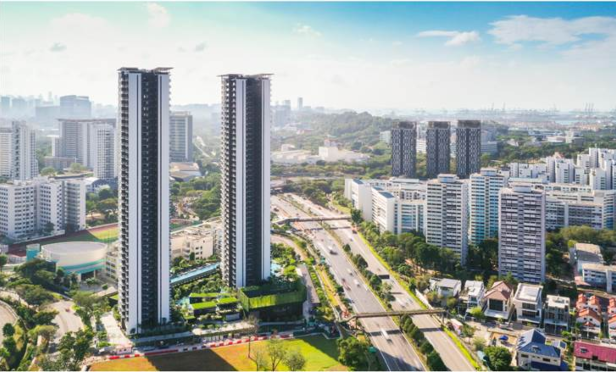 Los Angeles developers are taking note of the Clement Canopy buildings in Singapore. The two 40-story towers are the largest modular construction buildings in the world, and set a new standard of the potential for modular building. In Los Angeles, modular construction has the ability to revolutionize new construction, and the Clement Canopy buildings are a great example of the possibilities.
Los Angeles developers are taking note of the Clement Canopy buildings in Singapore. The two 40-story towers are the largest modular construction buildings in the world, and set a new standard of the potential for modular building. In Los Angeles, modular construction has the ability to revolutionize new construction, and the Clement Canopy buildings are a great example of the possibilities.
“Los Angeles is a very expensive market to build in, with rising construction costs,” Aurelie Clereaux, head of modular construction at Bouygues Bâtiment International, the construction company behind the Clement Canopy buildings, tells GlobeSt.com. “Modular solutions can help address the challenge of rising costs and help tackle the issues of labor shortages, as well as the need for fast delivery schedules. Because the construction timelines with modular buildings are shorter, there are also less interruptions to traffic and neighborhoods.”
While there is a tendency to link modular construction to hotel assets, modular construction is actually a fit for all asset classes. “It is becoming easier every day to build more of the modules offsite and therefore limit the remaining work left to be done onsite,” says Clereaux.
The diverse application has increased the potential usage for modular construction, but the benefits stretch beyond just application. Mostly, the benefit is decreased construction costs and time, which in turn means lower costs. “We've seen that it's faster, better, greener, safer and less costly,” says Clereaux. “From our experience, we've seen that modular construction enables a decrease in construction times of up to 50% and reduces on-site labor by 30%, which is an important consideration as several markets are challenged by labor shortages. Modular construction helps reduce noise and other disturbances to nearby neighborhoods. We also see an opportunity to use modular construction to improve on safety on construction sites. Plus, modular construction presents the possibility of reusing materials in the long term and is more sustainable overall.”
Developers in California, are quickly catching on. Bouygues Bâtiment International's American subsidy has gotten increased requests for modular construction. “We've seen there is a big push for modular construction. Our U.S. subsidiary company, Americaribe, has already been approached for project proposals,” says Clereaux.
For developers of all asset classes and styles, Clereaux says that modular construction should be an option from day one, and at the very least, developers should seriously consider it as an option. “We encourage developers to think about modular from day one,” she says. “We advise them to try to make the entire building compatible for modular construction, including the cores so they can get the full benefits of the construction program and aim for a shorter time to market.”
© 2025 ALM Global, LLC, All Rights Reserved. Request academic re-use from www.copyright.com. All other uses, submit a request to [email protected]. For more information visit Asset & Logo Licensing.







